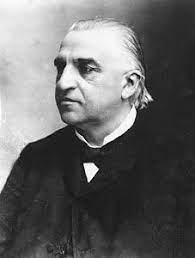Biography of Jean-Martin Charcot (1825–1893)

Charcot was born in stern surroundings in Paris following the Revolution. He was the grandson and son of carriage builders from Paris. Because of his limited finances, his father made the decision that his kid who did the best in school would continue his studies. Naturally, Charcot outperformed his three siblings and graduated from the University of Paris in 1848 with a bachelor’s degree in medicine. Subsequently, he accepted an internship at the L’Hôpital Salpêtrière in Paris, which he affectionately referred to as the “grand asylum of human misery.” In 1862, he wed a wealthy widow and had two kids. Though he is best known for being a marine explorer, his son Jean-Baptise reluctantly followed in his father’s medical career. Reportedly, Jean-Baptise
www Tumblr.com
believed that since “the name of Charcot would be honored twice” if he was successful, it would be the ideal way to honor his father’s memory.In honor of his father, 1 Charcot Island was named in Antarctica.
www.soup.io
In 1872 and 1882
Charcot held the positions of Professor of Pathological Anatomy and Professor of Neurology at the University of Paris. Over half of the approximately 5000 patients of Charcot’s clinical workhouse, L’Hôpital Salpêtrière, had a neurological condition. Once a gunpowder warehouse, it was converted into housing for prostitutes, criminally insane people, and the mentally ill as well as the poor and needy members of Parisian society. It also served as a jail, hospital, and asylum. Charcot was able to classify his patients, identify clinical characteristics, and conduct autopsies on this cohort of affected people, which allowed for new insights into and classifications of their neurological conditions. Under Charcot’s direction, the Salpêtrière’s standing as a busy hub for neurological care expanded, continuing the legacy of his “maître en neurologie,” Duchenne. Charcot gained international notoriety after traveling to London in 1881 for the International Medical Congress. brought Charcot and the Salpêtrière international renown. In 1882, he was then named Chair of Clinic for Diseases of the Nervous System.
www.pen.io
Originally trained as a pathologist, Charcot understood the connection between anatomical and clinical results. By applying this technique, he was able to establish a link between the pathological alterations found during the autopsy and the clinical characteristics of multiple sclerosis (MS). Being a talented artist, Charcot provided pictures of the sclerosis plaques in his comprehensive explanation of MS.2. Using the triad of nystagmus, intention tremor, and scanning speech to distinguish MS from related conditions, he was the first doctor to identify the disease in a living patient. The Charcot award for MS research is still given out every two years.
Additionally, he detailed other instances of discrete, escalating motor symptoms, including contractures, stiffness, fasciculation, involvement of the bulbar region, and respiratory failure leading to death. This illness was named primary amyotrophic lateral sclerosis (ALS) by Charcot.
It accurately determined that the pathophysiology behind the clinical characteristics was anterior horn cell failure.
In reviewing patients whose pathology did not fit the description of ALS, Charcot and his student Pierre Marie properly classified them as having a neuropathy rather than a myopathy. Charcot-Marie-Tooth, the peroneal form of muscular dystrophy, was thus created. On a stage illuminated by floodlights within the Salpêtrière amphitheater, Charcot substituted dramatic clinical demonstrations and patient interviews for the customary ward rounds. The public was able to witness his clinical demonstrations and hypnosis experiments. The Parisian nobility and intellectuals were so intrigued by these “hysteria shows” that hysteria became fashionable. It was believed that this innovative approach to teaching inspired Sigmund Freud, one of Charcot’s neurology pupils, to pursue an interest in the psychological causes of neuroses. Charcot had such a profound effect on Freud that he named his first son after his mentor.
In his final years, Charcot experienced angina. He had lead an unhealthy lifestyle, smoking an enormous amount of cigars and exercising little to never.2. In 1893, he passed away abruptly from heart failure. He was laid to rest at the Montmartre churchyard after his funeral service, which took place in the chapel of the Salpêtrière, his alma mater. Thanks to donations from his students, a bronze statue of Charcot was placed outside the Salpêtrière entrance in 1895. Unfortunately, it had to be taken out during the German occupation of Paris in the Second World War and used as fuel for munitions furnaces.
The field of modern neurology was founded by Charcot. “That to take away from neurology all the discoveries made by” Charcot, speaking of his master,
 Skip to content
Skip to content